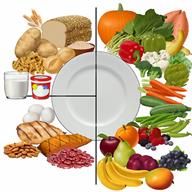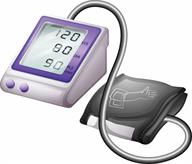High Blood Pressure (Hypertension) in Adults: What to Know
High blood pressure is when the force of blood pumping through your arteries is too strong. This is also called hypertension. Arteries are blood vessels that carry blood from your heart to your body.
If you have high blood pressure, your heart has to work harder to pump blood. This may cause the arteries to get narrow or stiff. High blood pressure can lead to a heart attack, heart failure, a stroke, or even kidney disease.
What are the causes?
In some cases, the cause isn't known. But there are many health problems that can cause high blood pressure.
What increases the risk?
You may be more likely to have high blood pressure if:
You may also be more likely to have high blood pressure if:
You smoke.
You don't get enough exercise.
You eat and drink too much fat, sugar, calories, or salt (sodium).
You drink too much alcohol.
What are the signs or symptoms?
In some cases, you may not have symptoms. But the higher your blood pressure, the more likely you are to have symptoms. These include:
Headaches.
Fast or uneven heartbeats.
Feeling dizzy.
Changes to your eyesight.
Nosebleeds.
Chest pain and feeling short of breath.
Throwing up or feeling like you may throw up.
How is this diagnosed?
You may be diagnosed based on your health history, symptoms, and blood pressure reading.
Healthy blood pressure for most adults is <120/80. The first number is the highest pressure reached in your arteries when your heart beats. The second number is the lowest pressure in your arteries when your heart rests between beats.
If you have high blood pressure, you may have blood or imaging tests done.
How is this treated?
You may need to:
Your target blood pressure will depend on your age and how healthy you are.
Follow these instructions at home:
Medicines
-
Take your medicines only as told.
-
Do not skip doses of blood pressure medicine.
-
Tell your provider if you have any side effects from the medicine.
Eating and drinking

- Eat things that are good for your heart. You may want to try the Dietary Approaches to Stop Hypertension (DASH) diet. To eat this way:
Eat lots of fresh fruits and vegetables. Try to fill half of your plate with fruits and vegetables.
- Fill about a fourth of your plate with whole grains. Whole grains include:
Whole-wheat pasta.
Brown rice.
Whole-grain bread.
Eat or drink low-fat dairy products, such as low-fat yogurt or skim milk.
Avoid fatty cuts of meat, lunch meats, and poultry with skin.
- Fill about a fourth of your plate with low-fat (lean) proteins, such as:
Fish.
Chicken without skin.
Beans.
Eggs.
Tofu.
-
Avoid processed foods. These tend to be higher in salt, added sugar, and fat.
-
Try to eat less than 1,500 mg of salt a day.
-
Do not drink alcohol if:
Your health care provider tells you not to drink.
You're pregnant, may be pregnant, or plan to become pregnant.
- If you drink alcohol:
- Limit how much you have to:
Know how much alcohol is in your drink. In the U.S., one drink is one 12 oz bottle of beer (355 mL), one 5 oz glass of wine (148 mL), or one 1½ oz glass of hard liquor (44 mL).
Lifestyle

General instructions
-
Do not smoke, vape, or use nicotine or tobacco.
-
Check your blood pressure at home as told.
-
Keep all follow-up visits. Your provider will want to check that your blood pressure is coming down.
Contact a health care provider if:
-
You have chest, back, or belly pain.
-
You have trouble breathing.
-
You faint.
You have any signs of a stroke.
"BE FAST" is an easy way to remember the main warning signs:
B - Balance. Feeling dizzy, sudden trouble walking, or loss of balance.
E - Eyes. Trouble seeing or a change in how you see.
F - Face. Sudden weakness or feeling numb in the face. The face or eyelid may droop on one side.
A - Arms. Weakness or loss of feeling in an arm. This happens fast and often only on one side.
S - Speech. Sudden trouble speaking, slurred speech, or trouble understanding what people say.
T - Time. Time to call 911. Write down what time symptoms started.
Other signs of a stroke can be:
These symptoms may be an emergency. Call 911 right away.
This information is not intended to replace advice given to you by your health care provider. Make sure you discuss any questions you have with your health care provider.

